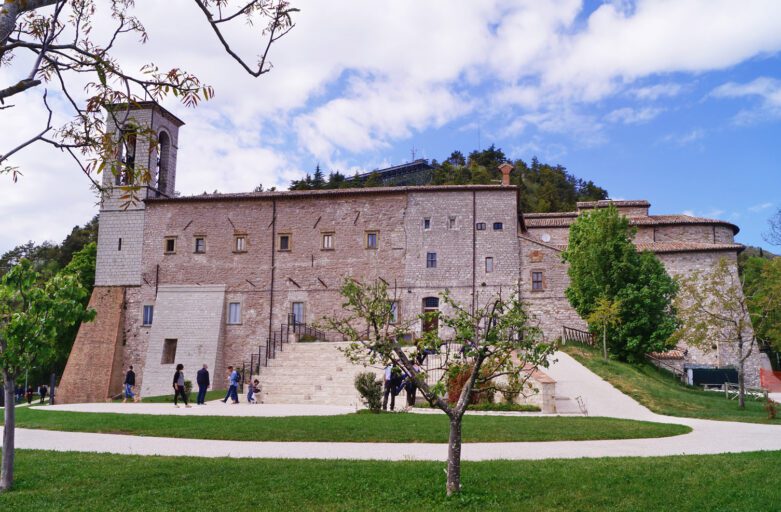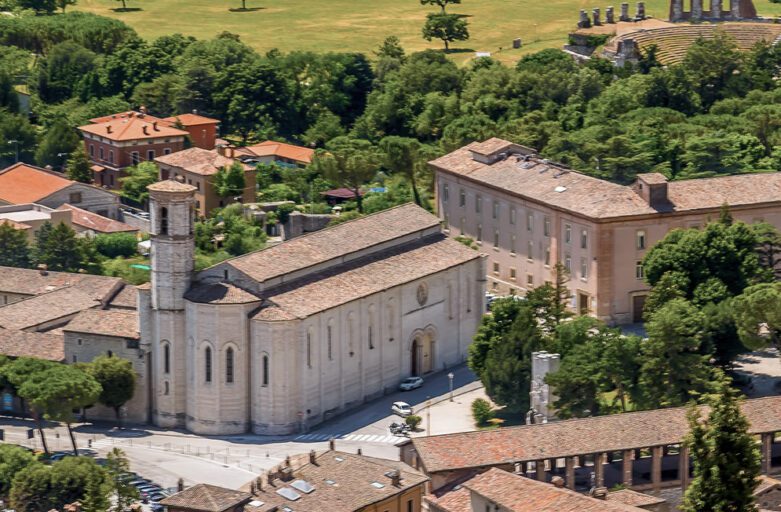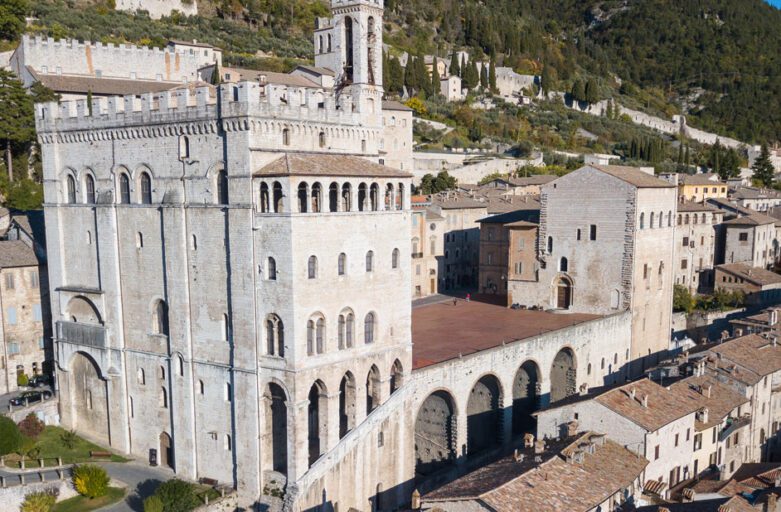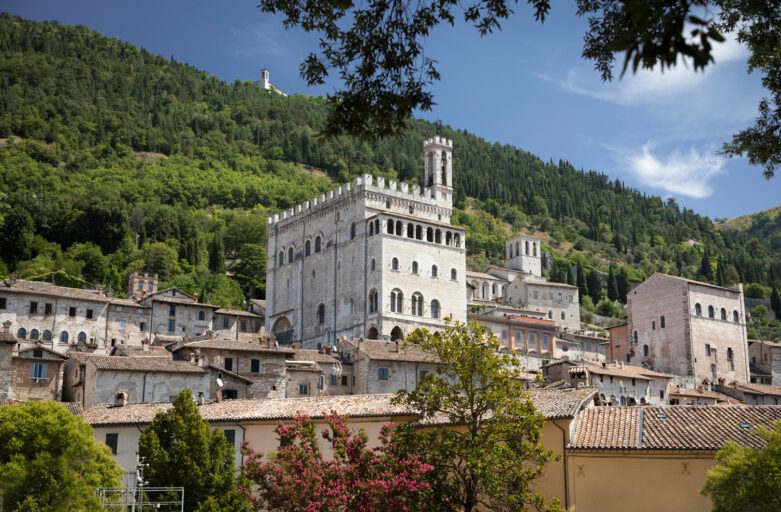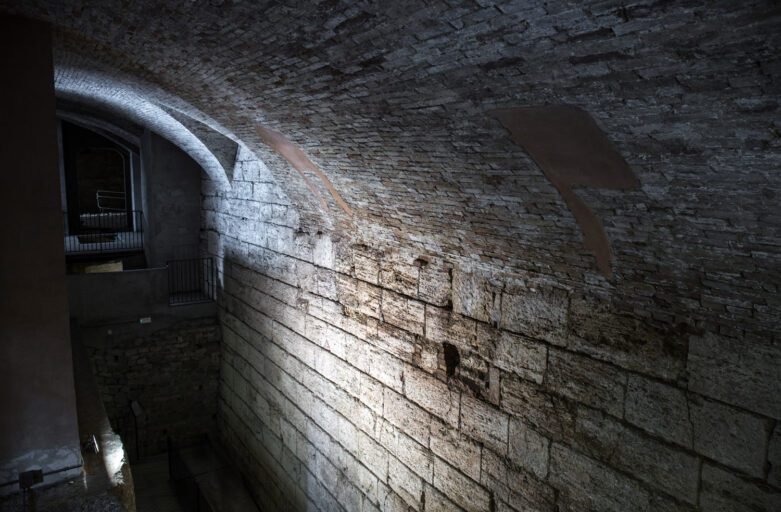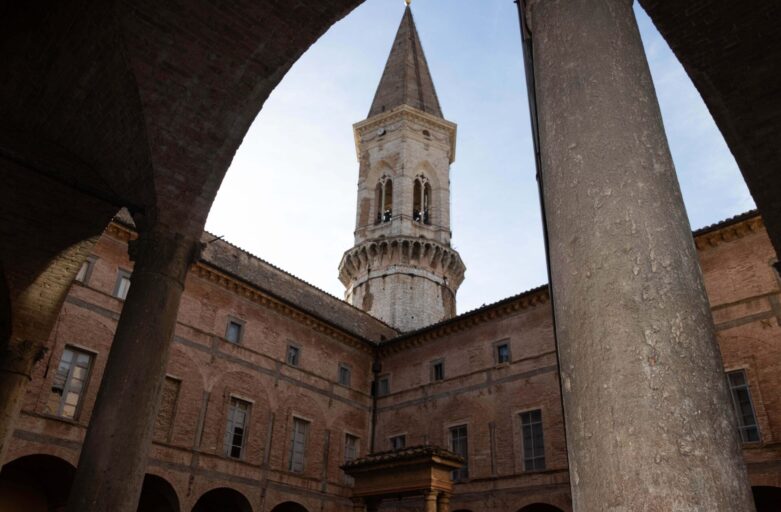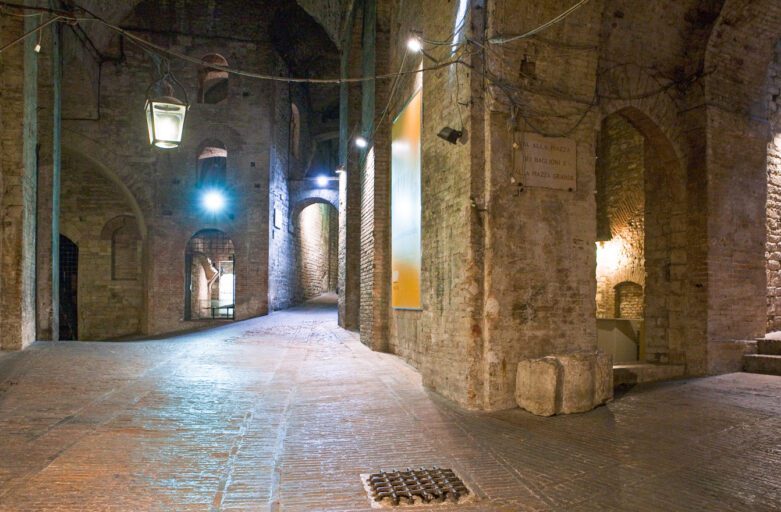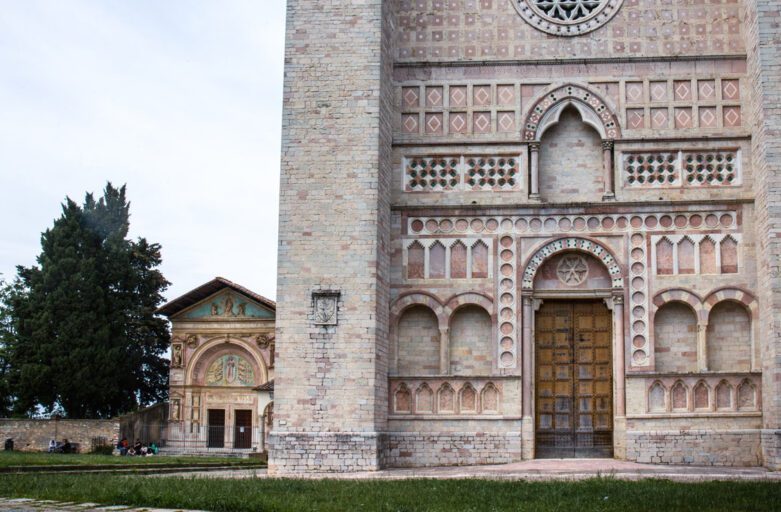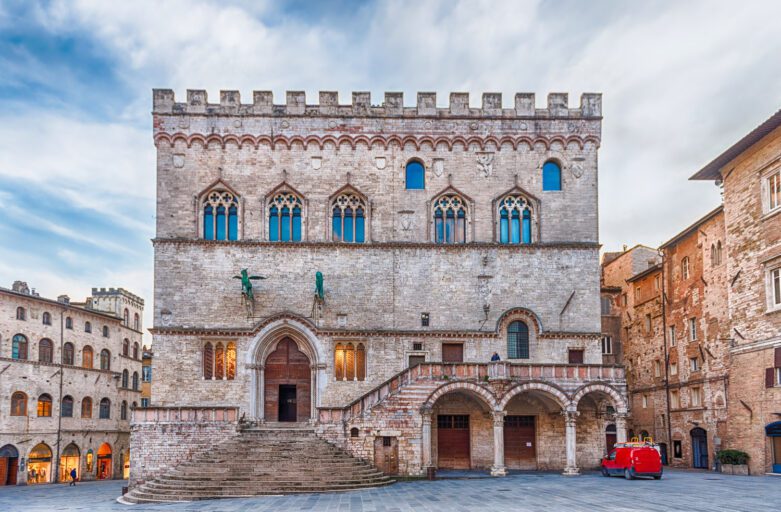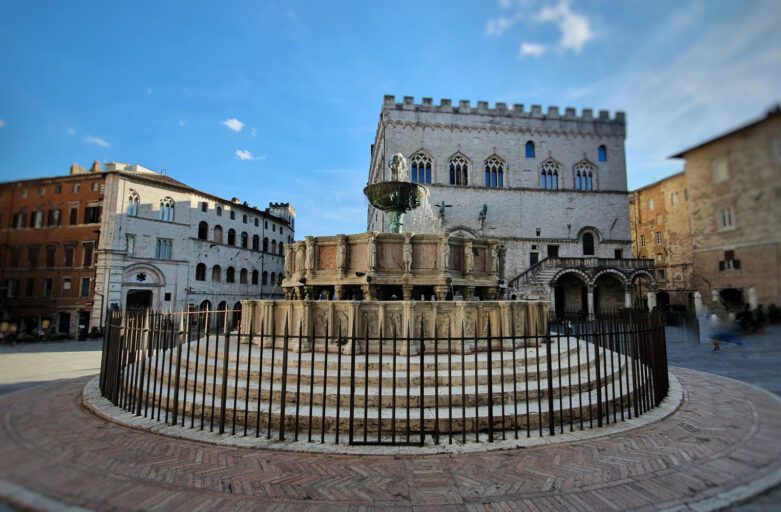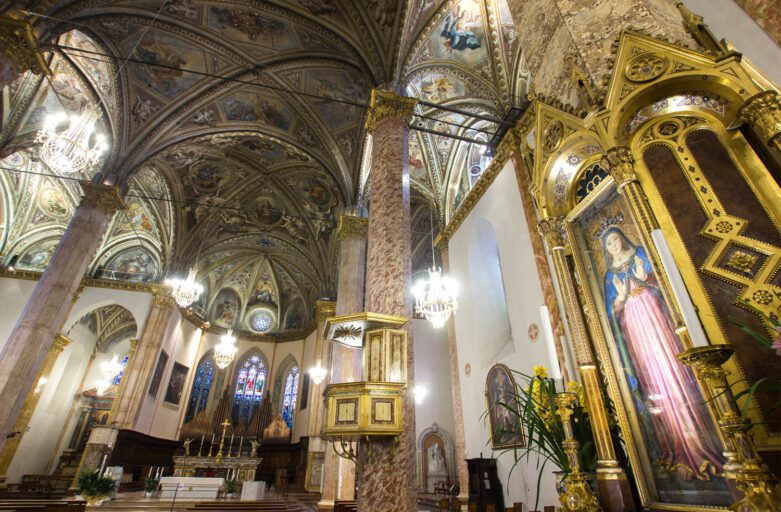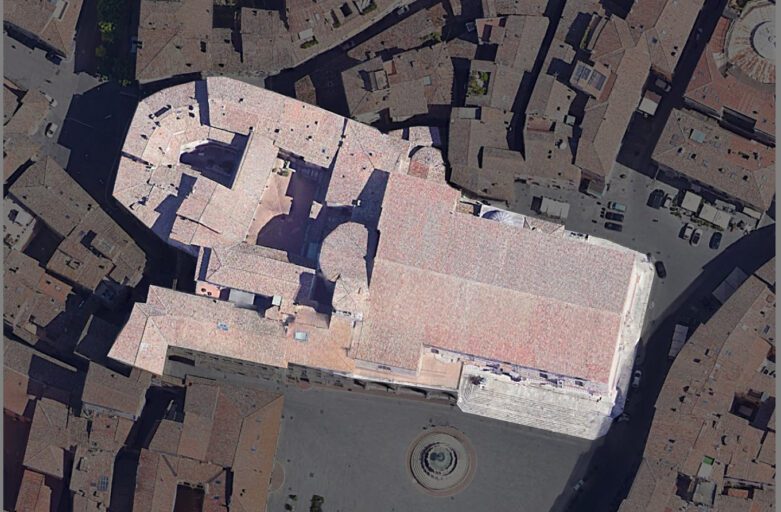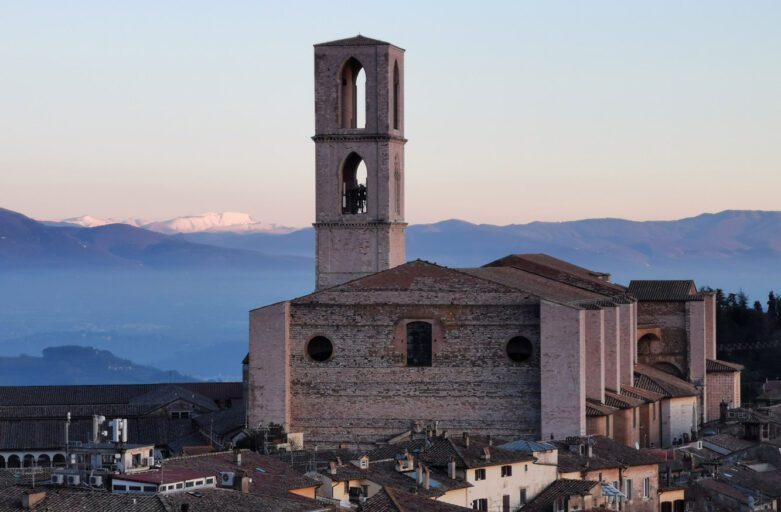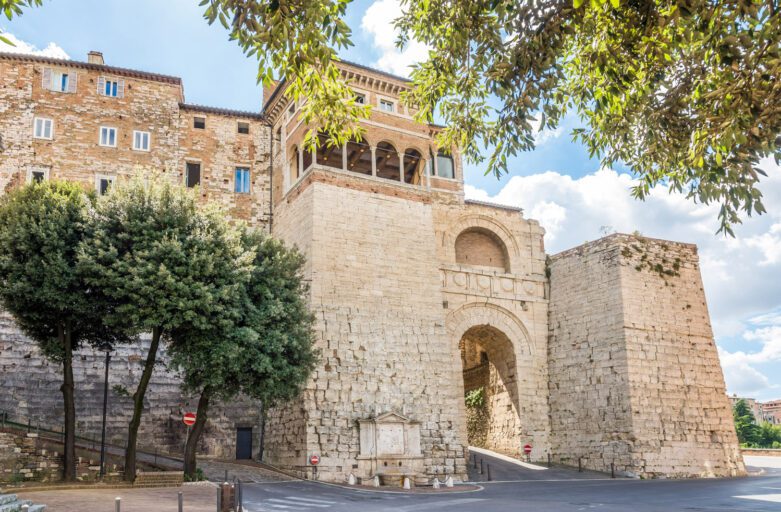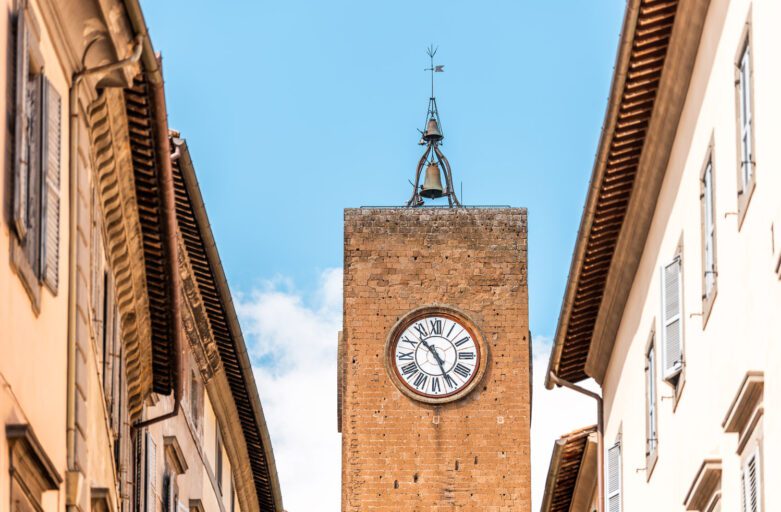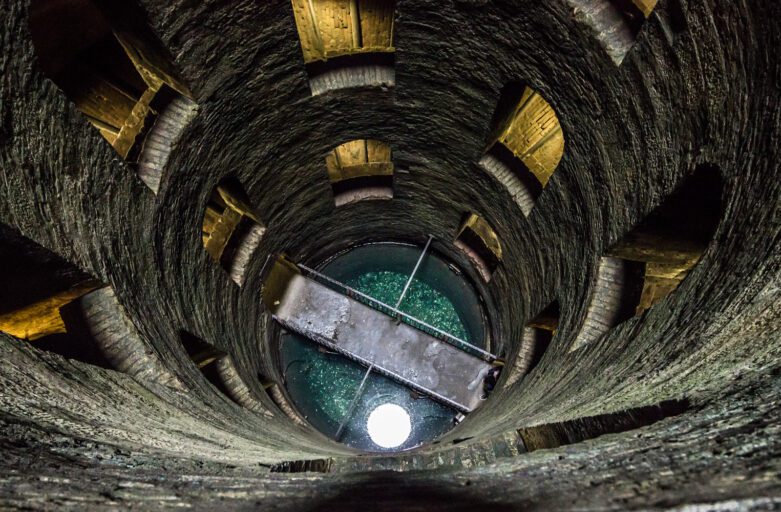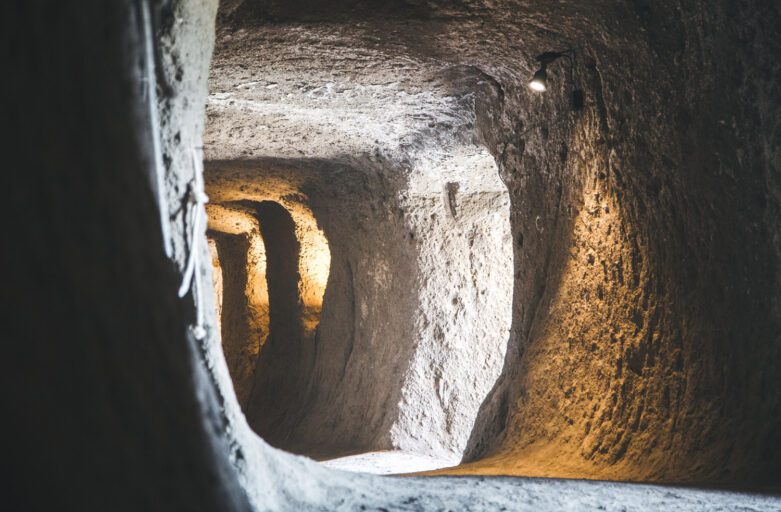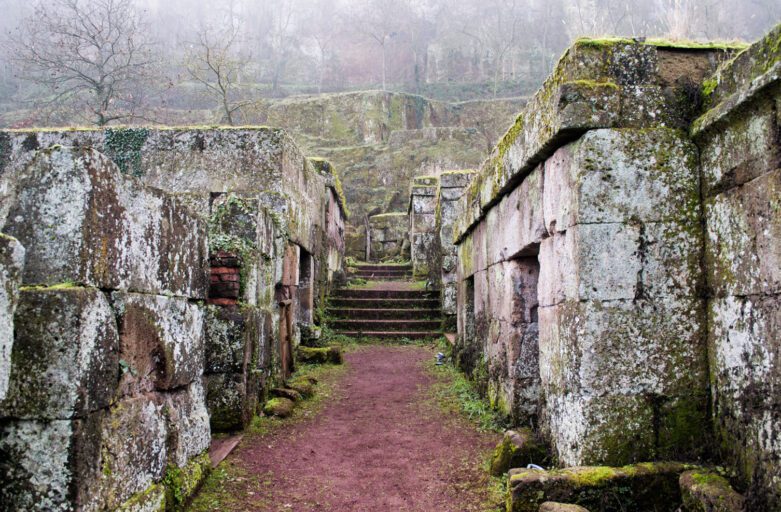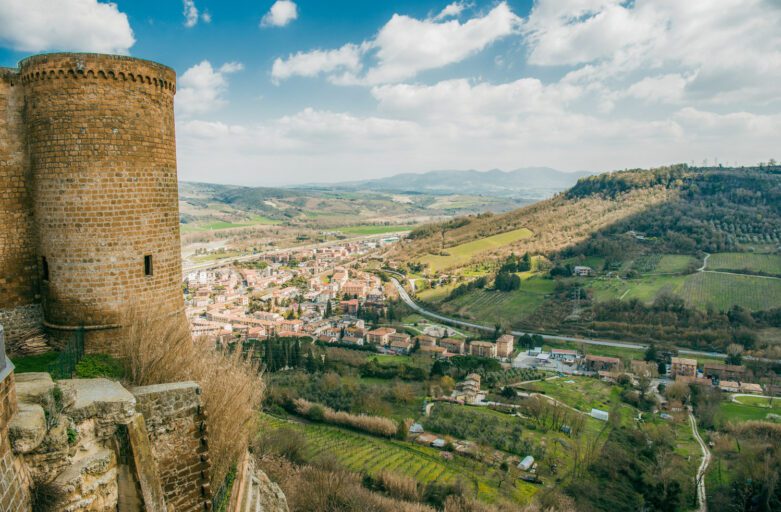A Brief Biography The personage of young Ubaldo – who was officially declared a saint on March 5, 1192 – cannot be divided from Gubbio and the great love the town’s inhabitants still have for him.
Tag: CULTURE
Saint Francis’ Church in Gubbio
Francis, the Man; and Gubbio The story of Gubbio and Francis of Assisi means the discovery of an intense relationship, interwoven with travels, friendship, and feelings. Francis’ father, Bernardone (“Big Bernard”)
Piazza Grande (The Main Square)
A Decentralized Center Gubbio rises at the foot of Mount Ingino with a strong self-consciousness. Framed within a luxuriant Nature, rich in woods and trails, it is considered one of the most beautiful Medieval towns in Italy.
Palace of Consuls
A Giant in the Square The Palace of Consuls (Palazzo dei Consoli), built in the years 1332-49, rises dramatically on the background of Piazza Grande, the Main Square. It is more than 60 meters (180 feet) high, including its originally shaped bell tower that still nowadays “calls” the citizens.
The Ducal Palace
At the Court of the Duke of Urbino
The Ducal Palace was built by decision of Federico da Montefeltro in a town area called Corte Vecchia (the Old Court) – right in front of the wonderful Gothic Cathedral dedicated to Saint Mariano and Saint Giacomo, martyrs of the 13th and 14th centuries. The palace was the very first example of Renaissance architecture in Gubbio, which it still overlooks.
Perugia Underground – The Archaeological Area
The Archaeological Area, at the very core of the so-called Saint Lawrence “Island”, will give you the joy of a discovery trip throughout the centuries. Quite unknown to the local people themselves, these places are hidden inside the hill on which Perugia is built.
Saint Peter’s Abbey
The way that starts from the Church of Saint Ercolano, and that in past times led directly to Rome, ends in Borgo Bello, the “Beautiful Suburb,” an area that developed thanks to the Benedictine abbey dedicated to Saint Peter.
The Rocca Paolina – Perugia
The Intriguing Story of a Fortress In Perugia’s old town center, at the southern end of Corso Vannucci (Main Street) there is an area with flowerbeds, benches, and fountains, where the Palace of Perugia’s Province and the equestrian monument to the first king of united Italy, Vittorio Emanuele II (1820-1878), also rise.
San Francesco al Prato, San Bernardino (Churches)
Perugia e San Bernardino
Telling about the beauty of Saint Francis Square, we cannot but start by mentioning Saint Bernardine of Siena, a friar from that town in Tuscany, who had frequent, influential contacts with Perugia – see below.
The Palace of Priors
A Town Symbol The Palace of Priors is undoubtedly one of the most important buildings in Perugia, beside being a masterpiece in Gothic style. Its structure develops partly along Main Street (Corso Vannucci) in the old town center, and has its acme in the façade facing the main square, Piazza IV Novembre.
A Fountain for an Aqueduct
The Fontana Maggiore, a gem of Gothic sculpture The Fontana Maggiore (Great Fountain) is the sculptural symbol of Perugia. It was built in 1278 to celebrate the completion of a long aqueduct that, by taking cleverly advantage of the principle of communicating vessels, could even conduct water uphill on Perugia’s hills.
The Cathedral of Saint Lawrence
A Cathedral to Welcome Them All The current Cathedral of Saint Lawrence replaced an older church, a Romanesque church, that therefore must have been built in the 12th century.
The Saint Lawrence “Island” – Perugia
The Saint Lawrence “Island”: the ancient district, heart of Perugia since Etruscans. It includes Perugia Underground, the Chapter Museum and the Cathedral.
The Old Town Center – Perugia
Perugia, the Old Town center: past to present along Corso Vannucci and the alleys of this beautiful town center with a Medieval charm.
The Etruscan Arch, the Town Walls
Perugia and Its Etruscan Walls
Perugia was one of the main Etruscan towns. Its external walls, dating back to the third century BC (with some older, fourth century parts), still witness the importance the town had acquired. The whole perimeter is some three kilometers (1.5 miles) long; many sections remain visible, while others have been incorporated within later buildings. The Etruscan walls follow the ups and downs of the soil. In the lower areas they fold inwards, so that the overall shape recalls a clover
Moro’s Tower, Palace of the Seven, People’s Palace
The Tower A Central Role in the Town The Medieval tower is among the buildings that stand out in Orvieto’s skyline, together with the imposing Cathedral. The tower will remain conspicuous even if you walk in the town streets
The Well of Saint Patrick
Antonio da Sangallo, a Brilliant Engineer On the edge of the Orvieto Cliff there is a small square in which only a cylindrical building exists, apparently quite anonymous. This structure, however, hides a “thing ingenious with fancy and wonderful with beauty” inside.
Orvieto Underground
The Hollow below the Town Orvieto lies on top of a huge rock of volcanic origin, made of tuff and pozzolana. Visitors cannot but be charmed by this plateau, called la Rupe (the Cliff), that rises and dominates the valley all around, with its woods and vines.
The Necropolis at “Crocifisso del Tufo”
When the Etruscans Founded Orvieto: From Sky down to Earth A tour between earth and sky: this is how Orvieto can be visited and discovered because of both its geographic position (a town rising on top of a cliff, surrounded by a valley) and its history (from ancient Etruscans to nowadays)
The Albornoz Fortress in Orvieto
From Freedom to Being Dominated During the Middle Ages, Orvieto enjoyed a long period of welfare and independence as a “free Commune” – its rulers being autonomous from the Emperor, both politically and economically
